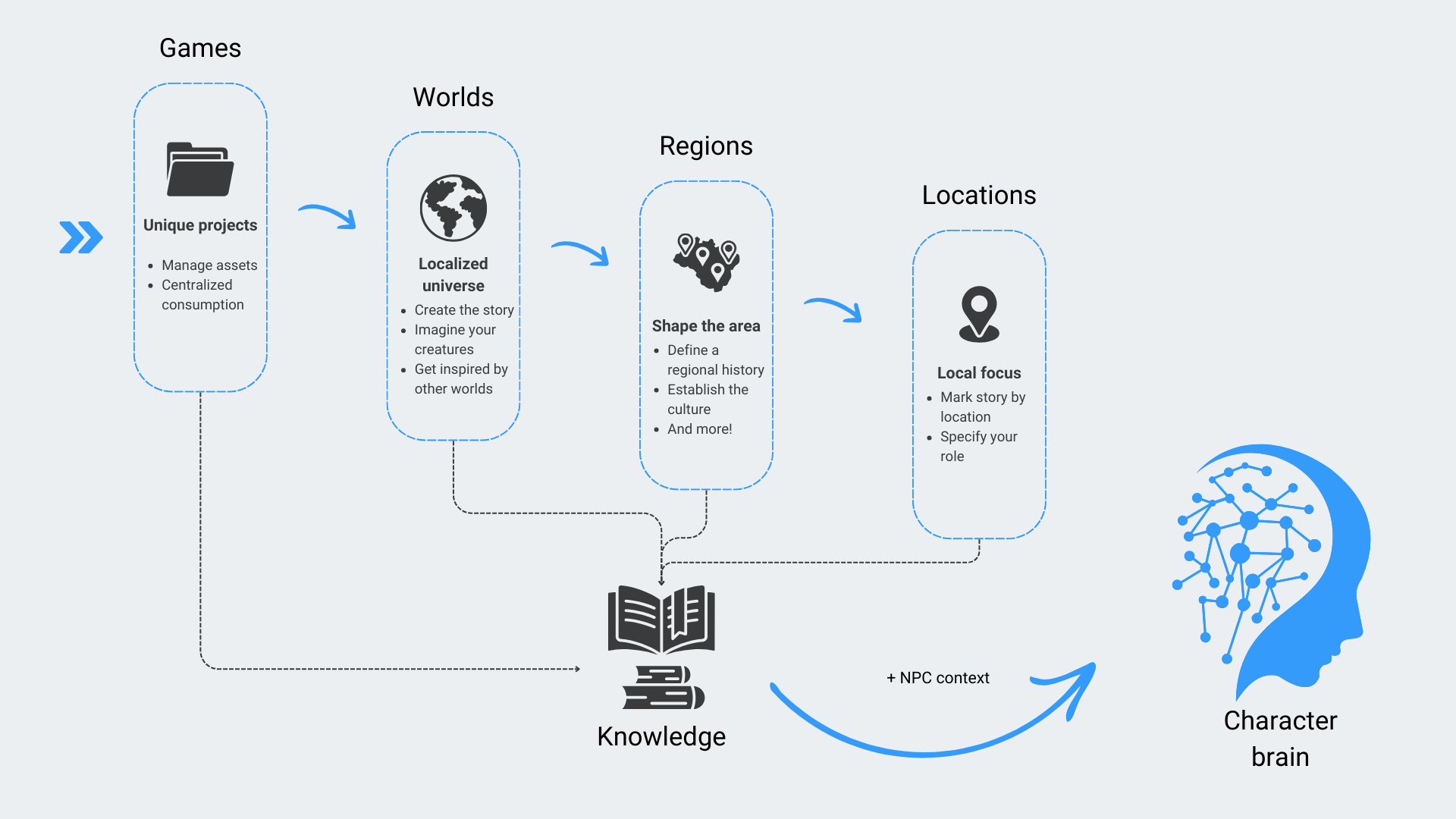How to create non-playable characters that look real? NPC Builder tells you with its revolutionary context layer

Non-playable characters (NPCs) are an essential part of any video game. They’re the ones who bring the virtual world to life, interacting with the player and each other. However, creating NPCs that are realistic, authentic, and consistent with their environment is no easy task. It requires a lot of time, effort, and creativity on the part of developers.
That’s why NPC Builder has created an innovative solution that uses artificial intelligence (AI) to revolutionize NPC creation.
In this article we will explain how the character context layer works, and how NPC Builder uses it to create incredibly realistic and contextually aware NPCs. But first, we invite you to read our previous article, where we tell you how NPC Builder works by unleashing the power of AI.
How does the Character Context Layer work?
The Character Context Layer is a detailed and well-structured process that is based on four main levels:
- Games: The first level is the game, where the unique project is managed and a centralized ecosystem is established. Here, each game is treated as an individual entity, ensuring that NPCs are specific and relevant to their genre, style, and setting.
- Worlds: The second level is the world, where the localized universe for the game is created. Here, the world’s history is imagined and developed, infusing it with unique characteristics that will be reflected in the NPCs. For example, the level of technology, magic, politics, religion, etc. that exists in the world can be defined.
- Regions: The third level is the regions, where the zones within the world are molded and defined. Here, the regional histories and specific cultures for each region are established, ensuring that NPCs interact in a coherent way with their environment. For example, the climate, geography, economy, society, language, etc. that characterizes each region can be determined.
- Locations: The fourth element is the locations, where it becomes even more granular. Here, each location within a region has its own brand and history, which allows NPCs to have specific behaviors and responses based on their immediate location. For example, the type, name, purpose, design, etc. of each location can be defined.
How does NPC Builder use the Character Context Layer to create realistic NPCs?
Through these four levels, NPC Builder’s Context Layer synthesizes all of the rich and detailed information to create incredibly realistic and contextually aware NPCs.
- Personality: An NPC’s personality, such as their behavior, motivations, and relationships, is defined by the developer in the character properties layer.
- Reactions: An NPC’s reactions to different situations and events are also generated dinamically, but are adapted to the context they are in.
What benefits does NPC Builder's Context Layer offer?
NPC Builder’s Context Layer offers a number of benefits for video game developers, including:
- Greater realism and authenticity: NPCs created with NPC Builder’s Context Layer are much more realistic and authentic than those created manually. This is because the Context Layer takes into account all of the factors that influence an NPC’s behavior, from their environment to their history.
- Time and resource savings: NPC Builder’s Context Layer automates much of the NPC creation process, allowing developers to save time and resources.
- Creation of more vibrant and dynamic virtual worlds: NPCs created with NPC Builder’s Context Layer help create more vibrant and dynamic virtual worlds. This is because NPCs interact in a coherent way with their environment and with other characters.
Conclusions
NPC Builder’s Context Layer is a revolutionary innovation that transforms NPC creation in video games. With NPC Builder, developers can generate NPCs with an unprecedented level of realism and authenticity, saving time, money, and resources. NPC Builder is the ultimate tool for creating vibrant and dynamic virtual worlds.
To learn more about how the character’s brain is created, stay updated! Subscribe to our newsletter to receive future news.